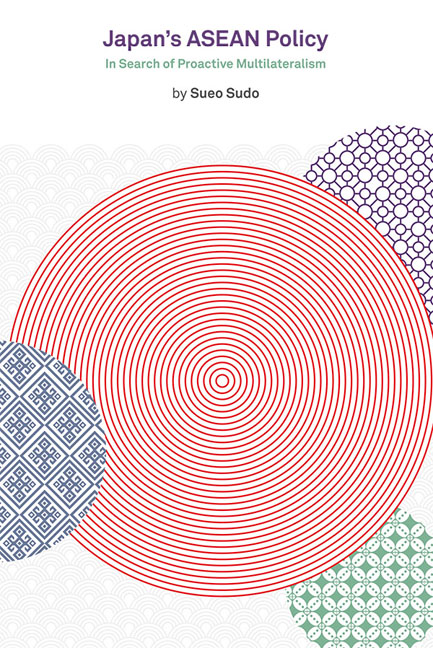Book contents
- Frontmatter
- Contents
- List of Figures and Tables
- Preface
- List of Abbreviations
- Introduction
- 1 ASEAN in Japanese Multilateral Foreign Policy
- 2 Embarking on Japan's ASEAN Policy: The Limitation of the Mainstream
- 3 Straightening the ASEAN-Indochina Divide: The Pursuit of the Alternative Stream
- 4 Consolidating an ASEAN-centred Policy: The Challenge of the Intermediate Stream
- 5 Fortifying a Japan-ASEAN Strategic Partnership: The Resurgence of the Mainstream
- 6 Towards a New Regionalism in East Asia
- 7 Conclusion
- Bibliography
- Index
- About the Author
- Frontmatter
- Contents
- List of Figures and Tables
- Preface
- List of Abbreviations
- Introduction
- 1 ASEAN in Japanese Multilateral Foreign Policy
- 2 Embarking on Japan's ASEAN Policy: The Limitation of the Mainstream
- 3 Straightening the ASEAN-Indochina Divide: The Pursuit of the Alternative Stream
- 4 Consolidating an ASEAN-centred Policy: The Challenge of the Intermediate Stream
- 5 Fortifying a Japan-ASEAN Strategic Partnership: The Resurgence of the Mainstream
- 6 Towards a New Regionalism in East Asia
- 7 Conclusion
- Bibliography
- Index
- About the Author
Summary
Our journey that has taken us to Japan and the Association of Southeast Asian Nations (ASEAN) is coming to an end. As is usually the case, the journey has had its ups and downs, with some pleasant surprises in coming to an understanding of the reality of Japan-ASEAN relations. The most profound change in post-war Japan's regional policy we have witnessed, is the fact that due to its proactive multilateralism, Japan could outgrow its low-profile posture or reactivity necessitated by the legacy of Japanese colonialism. Given the inherent limitation of Japanese foreign policy, Japan's ASEAN policy has traversed much further than expected. It is now safe to conclude that with the exception of China and South Korea, Japan has come to be accepted as a trustworthy and constructive partner in East Asia today.
In fact, ever since the Fukuda Doctrine laid the foundations in 1977, Japan's ASEAN policy has shown distinct features at critical junctures of Japan-ASEAN relations. The Takeshita Doctrine in 1987 consolidated the relationship during the late 1980s and mid-1990s and the Hashimoto Doctrine in 1997 began to expand the relations beyond Southeast Asia. Finally, the new Fukuda Doctrine in 2008 has attempted to nurture a new regionalism in East Asia, while at the same time retaining the essence of the Japan-ASEAN partnership. How has this unique relationship come about? Why has this relationship been sustained and developed? And most of all, whither the Japan-ASEAN partnership? By way of summary, first of all, let us put Japan's ASEAN policy into proper perspective.
JAPAN's ASEAN POLICY AS AN ALTERNATIVE STREAM
As discussed at the outset of this study, Japanese foreign policy contains three major streams (see Figure 7.1). The mainstream, premised on dependence on the United States and the pursuit of economic diplomacy, has proven effective as shown by the very fact that a defeated Japan became an economic great power in the middle of the 1960s. Even after the Cold War, Japan's alliance with the United States continues to constitute a cornerstone of Japanese foreign policy, although around the turn of the century the quest for grand strategy has become a post–Yoshida Doctrine national agenda.
The second is the alternative stream, which emerged when anti- Yoshida group leader Nobusuke Kishi attempted to implement his autonomous foreign policy, particularly exemplified by his proposal for the Southeast Asian Development Fund in 1957.
- Type
- Chapter
- Information
- Japan's ASEAN PolicyIn Search of Proactive Multilateralism, pp. 235 - 242Publisher: ISEAS–Yusof Ishak InstitutePrint publication year: 2014



